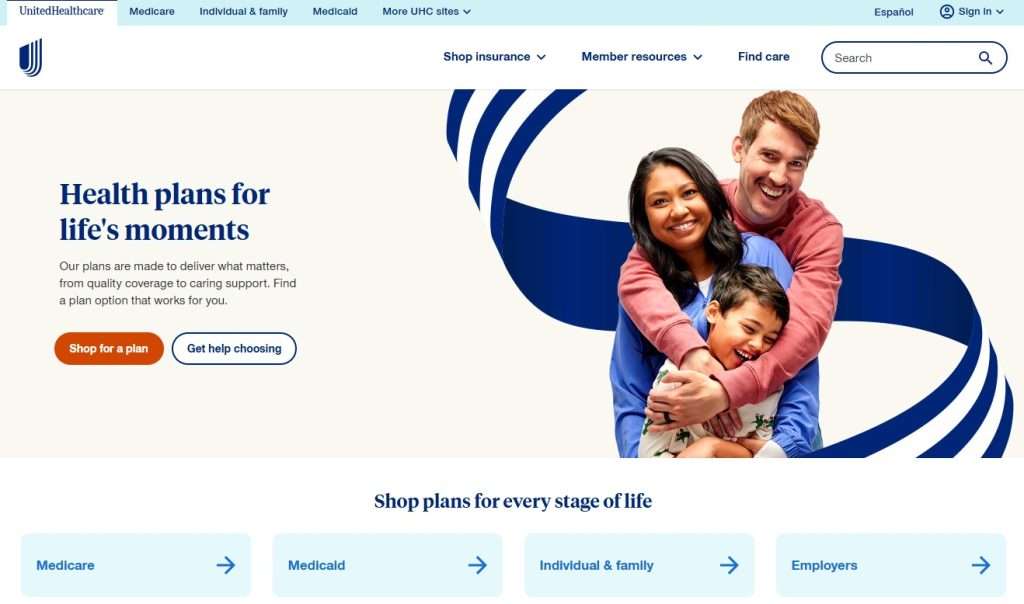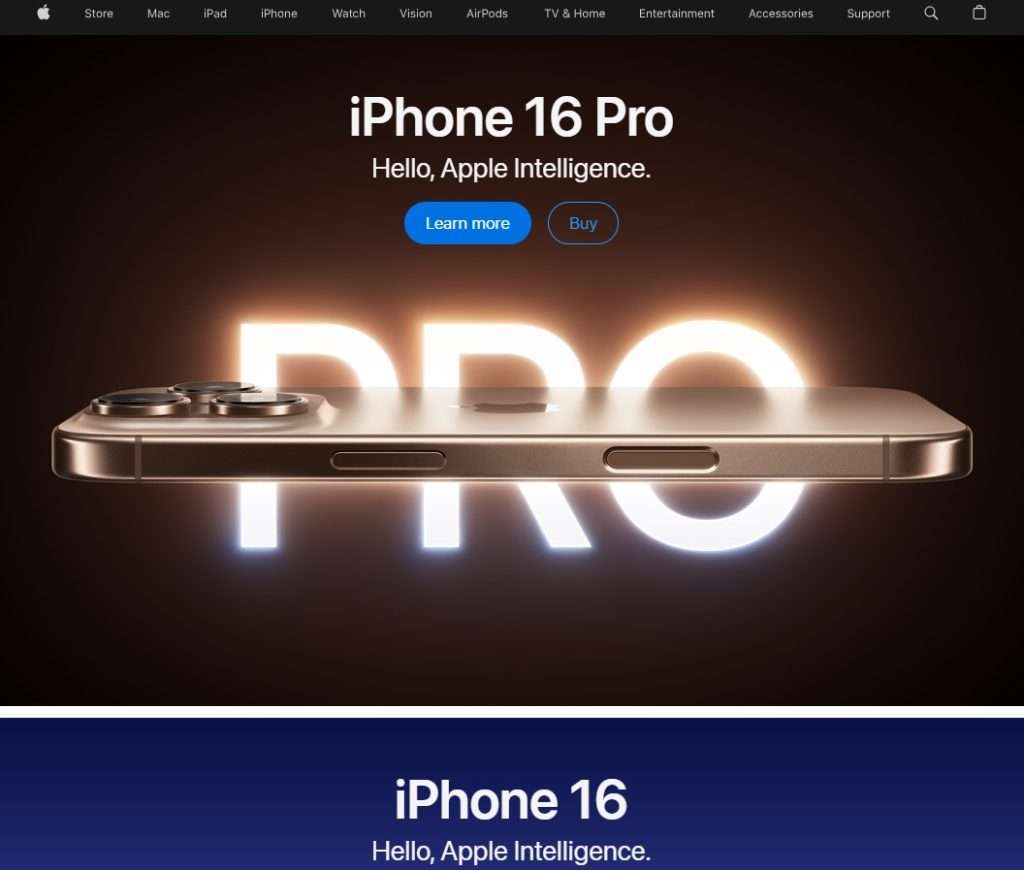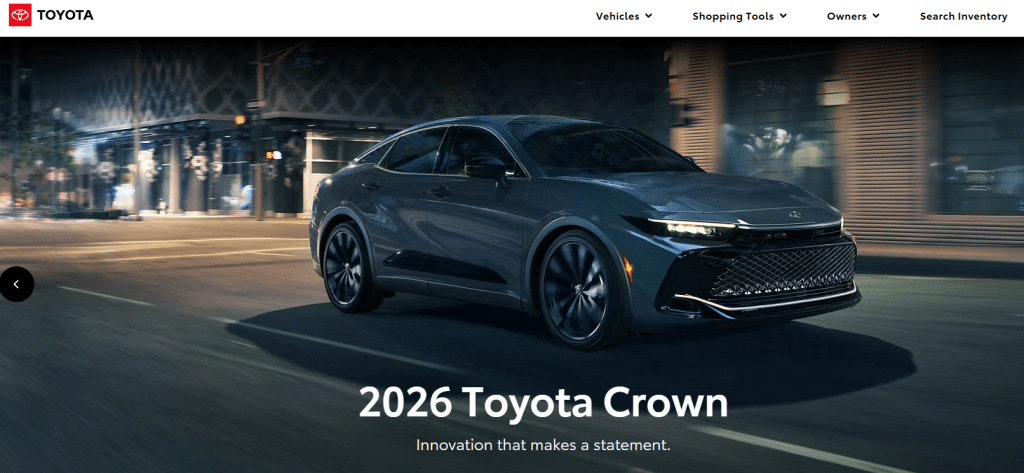Measuring Brand Value: Simplifying a Complex Calculation
Discover the complexities of brand valuation calculation and learn how to measure brand value with precision. Learn more about calculation methods and factors.
April 8, 2025

Brand value, as a company’s intangible asset, offers significant strategic and financial advantages.
A company’s intangible assets comprise a considerable portion of an enterprise’s financial worth. That’s why cultivating and measuring brand value is essential.
In this post, we’ll explore the benefits of value, brand valuation methods (both quantitative and qualitative), and real-world examples of how companies in healthcare, technology, and manufacturing leverage their brand’s equity.
Benefits of strong brand value
A brand’s value is more than perception. It’s a strategic asset directly impacting financial and operational performance. Decades of marketing and behavioral research confirm that brand equity influences customer purchase decisions, loyalty, pricing power, and future growth.
Companies with strong brands can command a premium in pricing. Customers will often pay more for a product or service offered by a name they trust, which reduces sensitivity to price changes and increases profit margins. This pricing elasticity gives brand-driven businesses a sustainable edge, particularly in commoditized or crowded markets. As a result, these companies often see a significant return on the investment in brand value.
High brand equity translates into repeat business and lower churn. Loyal customers return and often become advocates. High loyalty also reduces acquisition costs and provides more predictable revenue streams.
Because of their perceived reliability, new customers are more likely to choose established brands. Familiarity increases customer acquisition efficiency and accelerates time-to-market expansion strategies. Over time, these established companies compound market share gains and scale with greater stability.
Brand equity also reduces the risk associated with launching new offerings. A trusted name transfers its credibility to new products or services, which lowers marketing costs and increases the likelihood of consumer trial and adoption. For example, when Campbell’s introduces a new soup flavor, there is a higher chance that customers will purchase it versus one from a new or unknown label.
Strong brands act as shock absorbers during downturns, crises, or PR challenges. Consumers tend to give admired brands the benefit of the doubt and return to them faster after a crisis. Customer affinity provides reputational capital that shields against volatility and supports long-term demand.
Brand strength enhances internal performance and investor confidence. Companies with respected brands attract top talent with ease, experience greater employee engagement, and often benefit from a lower cost of capital. This broader impact of brand value is a key aspect of its importance.
How is brand value measured?
There are various methods for measuring brand value using equity, loyalty, awareness, and perception metrics. Financial valuation methods like brand value chains, brand finance, and value-based pricing models are used to calculate the monetary worth of a brand based on these factors.
Brand valuation process: Methods for measuring brand value
Brand value is inherently intangible. But it is far from immeasurable. Large organizations, valuation firms, and financial analysts use quantitative financial models and qualitative brand equity metrics to assess a brand’s contribution to business performance. Frameworks such as ISO 10668 standardize these valuation practices. Firms like Interbrand, Kantar BrandZ, and Forbes combine these elements in their global rankings.
At the core, value measurement asks: “How much strategic and financial value does the brand name contribute to the business?”
Financial valuation approaches (Quantitative)
These methods estimate brand value in dollar terms, treating it as a business asset that can be bought, sold, licensed, or leveraged for ROI. The three most widely accepted financial approaches are:
Income approach
This approach estimates the present value of future earnings attributable to the brand. It answers the question: How much future revenue or profit is driven by the brand’s influence?
A standard method within this approach is relief-from-royalty, which calculates what the company would have to pay in licensing fees if it didn’t own the brand. Another technique involves forecasting brand-related earnings (based on pricing premiums, customer loyalty, or margin uplift) and discounting them to present-day value.
For example, Brand Finance projects brand-specific earnings based on royalty rates and then discounts them to derive value. This method is widely used because it directly links brand performance to future cash flow.
Market approach
This approach determines value by comparing it to actual market transactions. Examples are acquisitions or licensing deals of comparable brands. It asks: What would a buyer pay for this brand in a competitive market?
Analysts look at deal multiples (e.g., revenue or EBITDA multiples) paid for similar brands and apply those benchmarks. For example, suppose Brand X, a company in the same industry, was purchased for 5× revenue. In this case, the same multiple may be used to estimate the target brand’s value. This method is beneficial when there’s recent M&A activity in the sector and publicly available valuation data.
Cost approach
The cost approach method examines historical or replacement costs. It factors in what it took (or would take) to build the brand from scratch, aggregating all past investments in brand development, including marketing, advertising, sponsorships, packaging, and design.
While helpful as a floor value, this method does not account for consumer sentiment, competitive positioning, or premium pricing power and may significantly undervalue strong brands. For example, a company might sum up all historical brand-building expenses, but this rarely reflects the full value of an established global name like Nike or GE.
Qualitative brand equity metrics
While financial models provide the complex numbers behind the value of a brand, qualitative brand equity metrics capture the perceptions, preferences, and emotional connections that drive those numbers. These indicators help to show us why a brand identity is strong and where it may be vulnerable.
Large companies monitor these metrics to understand brand health in the minds of customers, employees, and other stakeholders. They also serve as early warning signals or leading indicators of financial performance.
Brand awareness
Awareness measures brand recognition or recall. High awareness usually means the brand is more likely to be at the top of people’s minds when purchasing.
Awareness is typically measured through:
- Recall and recognition surveys
- Search engine trends
- Social media mentions
- Share of voice in digital marketing and advertising
Brand loyalty
Loyalty reflects ongoing customer commitment, both behavioral and emotional. Metrics such as repeat purchase rate, customer retention, and Net Promoter Score (NPS) offer insight into how likely customers are to return or recommend the brand.
A high level of loyalty contributes to:
- Customer acquisition cost savings
- Higher customer lifetime value
- Greater resilience during competitive or economic shifts
Perceived quality
This measures how consumers assess the quality of a brand’s products or services compared to competitors. Perceived quality is gauged through:
- Customer satisfaction scores
- Product and service ratings
- Independent or comparative surveys
Brands with consistently high perceived quality can often:
- Command price premiums
- Maintain market position and market share despite increased competition
- Increase customer trust and credibility
Brand associations
Brand associations are the ideas, feelings, and values people attach to a brand. Associations may stem from experience, storytelling, design, or shared values. Companies can uncover associations through qualitative research, such as interviews, focus groups, or ethnographic studies.
Common associations include:
- Brand personality (e.g., innovative, trustworthy, luxurious)
- Emotional benefits (e.g., peace of mind, excitement)
- Brand values (e.g., sustainability, inclusivity)
Additional indicators
Leading brands also track other indicators that reveal sentiment and preference:
- Brand preference: the percentage of consumers who would choose it over alternatives
- Customer satisfaction: often tied to specific interactions or product experiences (i.e., customer service)
- Share of Voice: visibility relative to competitors in media and marketing campaigns
- Social sentiment analysis: public perception on platforms like X, LinkedIn, or YouTube
- Composite Brand Equity Indexes: consolidate multiple metrics into a unified score for internal tracking
Qualitative insights complement financial valuations by revealing the underlying drivers of brand performance. If the financial value of a brand declines, these metrics help identify the root cause. Falling NPS, negative sentiment, or diminished relevance are examples. Conversely, rising scores in awareness, favorability, or preference often signal future market share and total revenue growth.
Brand Strength Scores: Bridging qualitative and financial performance
Many leading brand valuation firms assign a Brand Strength Score or rating as part of their methodology. These scores consolidate multiple qualitative metrics—such as awareness, perceived quality, customer loyalty, differentiation, and profitability—into a single composite indicator of brand health.
This integrated score serves two critical purposes for stakeholders:
1. Benchmarking: Enables consistent comparison of brand performance across industries and regions.
2. Valuation Impact: Directly influences financial valuations by adjusting discount rates or earnings multipliers.
Examples:
A. Brand Finance uses a letter-grade rating system (e.g., AAA, AA+, A) derived from a balanced scorecard of brand-related KPIs.
B. Interbrand assigns a Brand Strength Score out of 100 based on ten key factors grouped under three pillars:
- Internal clarity and commitment
- External relevance, authenticity, and responsiveness
- Performance indicators like presence, consistency, and differentiation
These strength scores inform valuation models and are a diagnostic tool for identifying brand-building opportunities or vulnerabilities. Brand strength ratings offer a valuable signal: They translate abstract perceptions into actionable data linked to financial performance and future brand-driven growth.
Notable brand valuation frameworks
While the core principles behind measuring brand value are widely understood, different firms interpret and apply them in distinct ways. Three of the most influential frameworks each offer a unique lens for measuring brand value.
Interbrand
Interbrand, one of the pioneers in measuring brand value, developed its Best Global Brands methodology with a strong financial foundation and a strategic overlay. Its approach centers on calculating the net present value of future earnings that can be attributed to the brand. This is done by analyzing the branded business’s financial performance and the brand’s role in driving customer choice, maintaining loyalty, and future demand. The final valuation multiplies economic profit by the role-of-brand percentage. It adjusts the discount rate based on a proprietary brand strength score.
Interbrand maintains strict inclusion criteria. A brand must be global, generate at least 30% of revenue outside its home market, operate across significant regions, and have publicly available financial reporting. These thresholds ensure credibility and consistency, though they exclude some high-performing regional or private companies. Interbrand’s framework strongly emphasizes brand strength as a driver of real-world business performance, highlighting its influence on customer acquisition, employee engagement, and financing costs.
BrandZ
Kantar’s BrandZ framework, developed by WPP, takes a more consumer-centric approach by layering financial data with extensive consumer insight. In addition to company earnings and growth projections, BrandZ incorporates survey responses from millions of consumers evaluating thousands of brands globally. Its methodology revolves around three pillars: meaningful, different, and salient. Brands that score highly in these areas tend to outperform in loyalty and revenue growth.
Because it factors in perception so heavily, BrandZ valuations can sometimes outpace those based purely on financial fundamentals, especially for brands with strong emotional resonance but modest earnings. This makes it particularly useful for marketing leaders and brand strategists who want to understand how brand equity influences consumer behavior. To be included, the company must have publicly reported financials, which generally restricts the rankings to public or highly transparent companies.
In addition to capturing tech, telecom, and retail giants, BrandZ has also helped spotlight emerging trends, such as the rise of Chinese brands and luxury goods, making it a tool for both valuation and market foresight.
Forbes
Forbes, by contrast, applies a financially conservative, industry-normalized methodology. Its value rankings are based primarily on complex numbers: average earnings (before interest and taxes) over the past three years and a sector-specific “brand contribution” factor that reflects how important branding is to that industry. For example, branding plays a much more significant role in tech or luxury than utilities or logistics. The earnings attributed to the brand are then multiplied by the average price-to-earnings ratio for that industry.
Forbes typically includes only large, U.S.-active global brands, and its valuations tend to be more restrained than BrandZ’s. For instance, in 2019, Forbes valued Apple’s brand at around $241 billion—a fraction of the nearly $950 billion BrandZ attributed to it that same year due to BrandZ’s inclusion of consumer sentiment and market perception. Forbes’ view emphasizes the bottom line: brand value is most meaningful when it translates directly to earnings in brand-driven industries. As a result, their rankings consistently highlight companies like Apple, Google, and Microsoft—brands with global recognition and formidable financial performance.
These differences in methodology mean that the same brand can receive vastly different valuations depending on the framework used. That doesn’t diminish the validity of any one model. Instead, it illustrates the dual nature of brand valuation as both art and science.
Financial models strive for accurate brand valuation. But, assumptions about brand impact, consumer behavior, and competitive context vary significantly. This is why many business leaders refer to multiple sources—including internal benchmarks—to get a realistic and actionable view of value. However, a shared conclusion remains consistent across every framework: strong brands are among a company’s most valuable assets.
Brand valuation calculation by industry
The following industry use cases include examples of brand values reported by various valuation firms. It’s important to recognize that these figures are estimates based on specific methodologies and data available at the time of valuation. They serve to illustrate the magnitude and trends in value within these sectors, but should not be taken as precise or universally agreed-upon amounts.
Healthcare: Building trust and value
In healthcare, brand value is inseparable from trust. Patients, providers, and payers rely on the names they believe in, making brand equity a decisive factor in long-term success.
UnitedHealthcare illustrates how trust in the name translates into measurable value. Brand Finance has ranked it the world’s most valuable healthcare services brand for nine consecutive years. In 2024, its brand value reached $47.6 billion. This growth reflects financial strength and consumer confidence in a sector where loyalty is hard-won.

By shifting to value-based care and emphasizing health outcomes, UnitedHealthcare repositioned itself as a proactive partner in wellness, elevating customer satisfaction. Its parent company, UnitedHealth Group, reinforces this equity through a complementary brand structure: UnitedHealthcare focuses on insurance, while Optum delivers tech-enabled care. Together, they form a brand ecosystem that supports market leadership and expansion without diluting trust.
Johnson & Johnson shows how pharmaceutical brand equity is built on decades of product reliability and consumer trust. Valued at $13.4 billion in 2024, J&J’s brand remained strong even through a major restructuring, and its core name continued to lend credibility across new markets and categories. The company’s legacy of quality acts as a reputational anchor in pharmaceuticals and med-tech.
Innovation also directly contributes to building equity. Novo Nordisk and Eli Lilly saw their brand values surge more than 50% in a year, driven by the success of obesity and diabetes treatments like Ozempic and Mounjaro. These breakthroughs positioned the companies as market leaders and trusted innovators, increasing brand demand among physicians and patients.
For healthcare organizations, brand value is a strategic asset that supports retention, accelerates innovation adoption, and earns investor confidence through consistent delivery and trust.
Technology: The $1 trillion race
Technology companies consistently lead global value rankings, illustrating how central brand equity is to consumer decisions and enterprise growth. Apple is the clearest example of how deeply a brand can influence behavior and valuation. In Kantar’s 2022 BrandZ ranking, Apple’s brand was valued at $947.1 billion—a staggering figure that positioned it as the world’s most valuable brand and put it on a path toward becoming the first trillion-dollar brand.
This leap in value, a 55% year-over-year increase, wasn’t driven by marketing alone. It resulted from Apple’s consistent focus on quality, innovation, and seamless hardware, software, and services integration. Kantar attributes Apple’s dominance to three key traits: relevance, distinctiveness, and mental availability—qualities that have helped the company maintain top-of-mind status across global markets. The strength of this equity empowers Apple to charge premium prices while retaining extraordinary levels of loyalty, a combination that has driven record-breaking revenues and allowed the company to reinvest aggressively in R&D and customer experience.

Apple’s brand strength gives it a unique strategic advantage. Whether launching a new streaming platform or expanding into financial services, the Apple name carries a built-in layer of trust that accelerates adoption. Its expansion into wearables, services, and subscription offerings has been remarkably successful not just because of product quality but because of what the brand represents: simplicity, reliability, privacy, and aspirational design. Even during market downturns, Apple retains customer engagement better than its peers. The company actively measures brand sentiment through NPS, customer satisfaction benchmarks, and retention rates, which feed into a cycle that continuously reinforces performance.
Other tech giants reflect similar patterns. Microsoft and Google (Alphabet) hold hundreds of billions in brand value, built on their ubiquity, reliability, and perceived utility. Amazon, which topped value rankings throughout the late 2010s, has cultivated substantial equity through its frictionless user experience, expansive ecosystem, and Prime-based loyalty. These companies track engagement, ecosystem dependence, and relevance to maintain their leadership and heavily invest in marketing, innovation, and customer experience to sustain it.
However, the tech sector’s speed and visibility make value highly dynamic. Brand equity can quickly erode when public sentiment shifts, due to data privacy concerns, regulatory pressure, or reputational missteps. Meta’s recent valuation fluctuations are one example.
In contrast, companies like Apple that deliver consistent, high-value user experiences tend to turn their brands into durable competitive moats. Trust and loyalty remain the most defensible assets in an industry defined by disruption. For tech leaders, the brand is the engine that drives both.
Manufacturing: Brand value in durable goods
In manufacturing, brand value hinges on perceived quality, reliability, and innovation. These attributes influence buyer decisions and reinforce long-term business performance.
Toyota exemplifies this. In 2025, it was named the world’s most valuable automotive brand, valued at $64.7 billion after a 23% year-over-year increase. This growth reflects Toyota’s steady focus on hybrid technology and its ability to navigate supply chain disruptions more effectively than competitors.

Toyota’s strength is built on consistency. Its vehicles are known for durability and affordability, and its message of reliability resonates globally. Customers often start their car ownership journey with Toyota and return for subsequent purchases, generating high retention and lifetime value. Even as the industry shifts toward electric vehicles, Toyota’s hybrid-first strategy has positioned it as a pragmatic innovator, appealing to consumers who value proven performance alongside sustainability. This careful balance has helped maintain sales and trust during the transformation.
Brand strength in manufacturing often manifests through high third-party ratings, premium resale value, and intense customer satisfaction. Toyota’s success in expanding into luxury with Lexus, supported by its core equity, contrasts with Tesla’s more volatile trajectory. Tesla’s brand value dropped from over $60 billion in early 2024 to $43 billion in 2025. The drop in value was attributed to several factors, including growing competition from other electric vehicle manufacturers like BYD, an aging product lineup, and controversies surrounding Elon Musk’s political stance.
Beyond automotive, industrial giants like Siemens, GE, and Caterpillar leverage long-standing reputations to win significant contracts, where reliability carries as much weight as performance. In consumer electronics, companies like Samsung and LG continue to increase value by aligning product innovation with consistent messaging. Even legacy names like Philips have revitalized their position by focusing on healthcare innovation and purpose-driven strategy.
The strategic advantage you can’t afford to ignore
The brand values and rankings mentioned throughout this article are based on publicly reported data and estimates from leading valuation firms as of the specified dates. These valuations are subject to the methodologies and assumptions of the respective firms. They may not reflect real-time market transactions or valuations conducted by other entities. Therefore, these figures should indicate brand strength and financial contribution at a specific time rather than definitive absolute value measures.
Brand value is a core driver of business performance, shareholder confidence, and long-term growth. Leading companies across industries, from healthcare to tech and manufacturing, invest in brand equity not just for marketing advantage but also for pricing power, customer loyalty, and resilience in voluntarily measuring brand value. This requires more than a one-time financial model.
If your organization is ready to evaluate, elevate, or unlock your business’s full potential, now is the time to act. Connect with a strategist to assess your current position, uncover hidden value, and build a brand that performs as powerfully as your business.
Ready to learn more?
Connect with a strategist for a no-obligation session designed to pinpoint your brand's biggest opportunities and get a clear path to successful outcomes.

POST AUTHOR
Core services
Digital marketing
audit services
Discover how to improve marketing campaigns, strengthen the impact of every customer touchpoint, and focus resources on the actions that generate more revenue.
Customer experience strategy consulting
Turn raw customer data into audience personas and laser-focused messaging.
